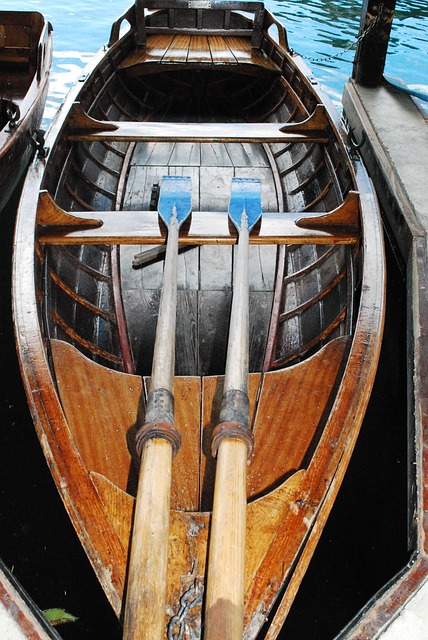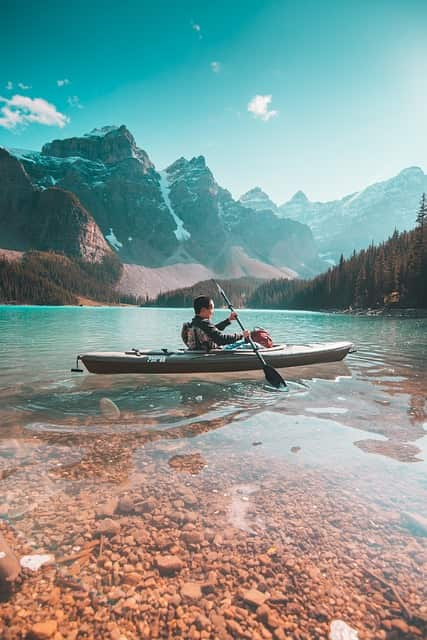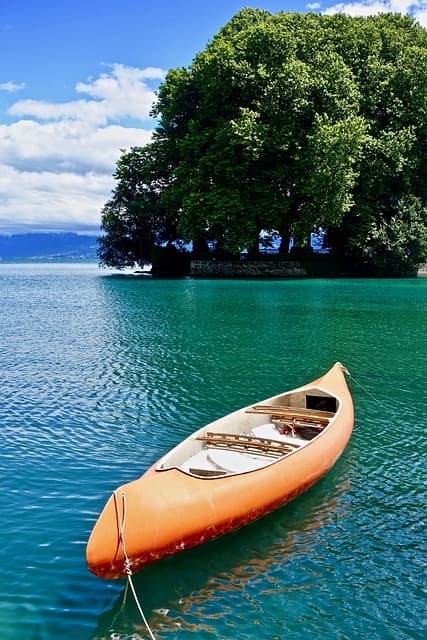When it comes to exploring the serene waters and connecting with nature, two popular choices stand out: the canoe and the kayak. Both of these watercraft offer unique experiences and have their own advantages and disadvantages. Whether you’re a beginner looking to embark on your first paddling adventure or an experienced water enthusiast seeking to compare these two options, understanding the differences between canoes and kayaks is essential.
The Fascinating History
The history of canoes and kayaks is a captivating tale that traces back thousands of years to ancient civilizations, where these watercraft played essential roles in transportation, trade, hunting, and exploration. The evolution of these vessels offers a glimpse into the ingenuity and resourcefulness of humanity in utilizing natural materials to navigate the waterways of the world.
Early Beginnings
The earliest evidence of watercraft resembling something similar dates back over 8,000 years. Indigenous cultures in regions such as North America, Europe, and Africa crafted boats from materials like hollowed-out logs, animal skins, and reeds. These primitive vessels provided a means of crossing rivers, lakes, and coastal waters, and they were crucial for hunting and gathering resources.
Diverse Designs
As cultures and communities developed, so did the designs of these boats. Different geographic locations and the availability of materials led to a wide array of styles. In North America, for instance, Native American tribes crafted dugout canoes from large tree trunks using fire and hand tools. These canoes were well-suited for navigating the waters of lakes and rivers.
In Arctic regions, the Inuit people developed the kayak. Made from driftwood frames and covered with animal skins, its design provided insulation against cold waters and the harsh Arctic climate. The enclosed cockpit and sleek shape allowed for efficient hunting in open water and the ability to navigate through icy conditions.

European Influence
As explorers from Europe began to travel the world, they encountered these native paddleboats and incorporated some of their design elements into their own creations. European settlers and fur traders in North America adapted the dugout form while retaining their functionality and craftsmanship.
Industrial Revolution and Modernization
The 19th century brought significant changes to their construction with the advent of new materials and techniques. The Industrial Revolution introduced steam power and factory production, allowing for the mass production of wooden watercraft.
In the early 20th century, the development of lightweight materials like aluminum and fiberglass revolutionized the industry. These materials made the rowboats more accessible to a wider audience. Modern designs and materials also enabled these watercraft to be used in various recreational activities, from leisurely paddling to whitewater adventures and even competitive racing.
Today’s Versions
The contemporary market offers an extensive range of options. Traditional materials like wood are still used by artisans and enthusiasts who appreciate the craftsmanship and aesthetics of these classic designs. However, modern canoes and kayaks are primarily made from materials like rotomolded plastic, fiberglass, carbon fiber, and inflatable materials.
Recreational and touring canoes, along with a variety of kayak types cater to different preferences and pursuits. These watercraft are used for leisure, exploration, fishing, eco-tourism, and even as a means of exercise and stress relief.
Preserving Heritage
In recent times, there has been a growing interest in preserving the traditional knowledge and techniques of rowboat construction. Indigenous communities and cultural organizations are working to ensure that these ancient skills are passed down through generations, maintaining a connection to history and heritage.
Unveiling the Differences
Canoeing and kayaking are both popular water activities that offer unique experiences on rivers, lakes, and oceans. While they share similarities, they are distinct in terms of design, purpose, and handling. Let’s delve into the key differences between these vessels to help you make an informed choice based on your preferences and intentions.

1. Design and Structure.
Canoe:
- Canoes generally possess open-top structures characterized by elongated hulls, which allow for multiple passengers and often include room for storing equipment;
- They fit more for recreational excursions, family outings, and camping escapades;
- Moreover, their heightened sides contribute to the creation of a capacious and steady foundation for a variety of activities.
Kayak:
- Characterized by their enclosed cockpit design, these vessels exhibit a lower profile and a comfortably snug seating arrangement;
- Typically tailored for either solo or tandem paddling, their design emphasizes swiftness, maneuverability, and streamlined performance;
- These watercrafts provide enhanced control and are particularly favored for pursuits such as whitewater kayaking, sea kayaking, and touring.
2. Paddling Techniques
Canoe:
- Canoes are propelled using single-bladed paddles;
- Paddlers use a combination of strokes, including the J-stroke, to maintain a straight course;
- Mastering the paddling technique can take some practice, especially for beginners.
Kayak:
- They are powered by double-bladed paddles;
- Paddlers use alternating strokes on both sides to achieve smoother and more efficient propulsion;
- The closed cockpit design allows for a more synchronized and controlled paddling experience.
3. Stability and Maneuverability
Canoe:
- They offer greater initial stability due to their wider hull and open design;
- They are suitable for beginners and those seeking a stable platform for leisurely paddling.
Kayak:
- These boats provide better secondary stability, making them more stable when leaned and ideal for handling rough waters and challenging conditions;
- The lower profile and streamlined shape of kayaks enhance maneuverability and responsiveness.
4. Versatility and Purpose
Canoe:
- Canoes are versatile and can be used for various activities, such as fishing, camping, and casual paddling;
- They excel at accommodating larger loads and passengers.
Kayak:
- Kayaks are meticulously crafted with particular activities in focus, including whitewater kayaking, sea touring, and leisurely paddling;
- They are specially tailored to cater to solo adventurers and individuals in search of nimbleness and swiftness on the water.
5. Storage and Transport
Canoe:
- They have more interior space, making them ideal for storing gear and supplies;
- Transporting them can be more challenging due to their size, requiring roof racks or trailers.
Kayak:
- They may have less storage space, but some models offer storage compartments or hatches for essential items;
- These boats are generally easier to transport due to their compact size and lower weight.
The Biggest Pros of Both Watercrafts
Just like any other transportation means these vessels have some great things to offer. Let’s take a look at some of the greatest advantages of both types
Canoe
Canoes are incredibly versatile watercraft. They can be used for a wide range of activities, including leisurely paddling, fishing, camping, and even exploring calm rivers and lakes. They have a larger interior space compared to kayaks, making them perfect for carrying more passengers, gear, and supplies. This makes them a great option for family outings or extended trips.
These boats offer excellent initial stability due to their wider hull design and open-top structure. This stability is particularly beneficial for beginners and those looking for a stable platform for various activities. The spacious design of canoes allows passengers to move around comfortably, making them suitable for relaxing paddles and longer journeys.
They offer easy entry and exit, especially when launching from a dock or shoreline. The open design allows for effortless transitions in and out of the boat. Plus, they are well-suited for group outings. Multiple passengers can paddle together, fostering a sense of camaraderie and shared experience.

Kayak
Kayaks are designed for precise maneuvering, making them excellent for navigating through narrow waterways, tight corners, and challenging environments. The streamlined shape along with the use of double-bladed paddles, provides better efficiency and speed compared to canoes.
The closed cockpit design offers better control over the watercraft, allowing for more precise strokes and responsiveness, which is crucial in situations like whitewater kayaking or sea touring. They typically have superior secondary stability, which means they remain stable when leaned on their sides. This feature is valuable in rough waters and can prevent capsizing.
They are ideal for solo adventures due to their single-person cockpit. This allows paddlers to explore at their own pace and enjoy a more solitary experience on the water.
They are generally easier to transport due to their smaller size and lower weight. They often fit on roof racks or can be carried in the back of a pickup truck.

How to Make a Choice?
Choosing between a canoe and a kayak depends on your preferences, intended activities, skill level, and the type of experience you’re seeking on the water. Here are some factors to consider when making your decision:
1. Type of Activities. Consider the activities you’re most interested in. Are you looking for thrilling whitewater adventures, calm lake paddling, or leisurely explorations? Each watercraft has its strengths in different types of activities.
- Whitewater Adventures: If you’re interested in navigating rapids and challenging waters, a kayak is better suited due to its maneuverability and control;
- Calm Water Exploration: If you prefer relaxed outings on calm lakes or slow rivers, a canoe might be more enjoyable for leisurely paddling and taking in the scenery;
- Sea Touring: For coastal explorations and open-water adventures, a sea kayak is designed to handle waves and currents.
2. Skill Level. Consider your level of experience with paddling and water sports.
- Beginners: Canoes offer better initial stability, making them a good choice for beginners who want a stable platform while they learn the ropes;
- Intermediate to Advanced: If you have some paddling experience and are comfortable with balance and maneuvering, kayaks can offer a more dynamic and responsive experience.
3. Solo vs. Group. Think about whether you’ll be paddling alone or with others.
- Solo Adventures: If you enjoy solitary experiences and want to set your own pace, a kayak allows for independent exploration;
- Group Outings: Canoes accommodate more passengers and are ideal for social outings with friends or family.
4. Storage and Gear. Consider whether you’ll need to carry gear or equipment for your trips.
- Camping Trips: If you’re planning overnight trips and need to carry camping gear, a canoe’s larger storage capacity might be advantageous;
- Day Trips: For shorter outings, kayaks with hatches or compartments can still carry essential items.
5. Comfort and Space. Think about your comfort preferences and how much space you need.
- Space and Comfort: Canoes offer more interior space, allowing you to move around and enjoy a comfortable ride;
- Control and Precision: Kayaks provide better control, allowing for precise maneuvering and responsiveness.
6. Transport and Storage. Consider how you’ll transport and store your watercraft.
- Transport: Kayaks are generally easier to transport due to their compact size and lower weight;
- Storage: Canoes may require more storage space due to their larger size.
Types of Kayaks
Kayaks come in a variety of types, each designed to cater to specific activities, water conditions, and paddler preferences. Here are some of the most common options:
Recreational
- Designed for beginners and casual paddlers;
- Generally stable and easy to maneuver;
- Ideal for calm lakes, slow-moving rivers, and sheltered waters;
- Often have open cockpits for easy entry and exit;
- Suitable for leisurely paddling, wildlife observation, and short trips.
Touring or Sea
- Designed for longer journeys and open water conditions;
- Longer and narrower than recreational ones for improved efficiency and speed;
- Equipped with storage compartments or hatches for gear and supplies;
- Suitable for coastal exploration, multi-day trips, and expedition-style paddling.
Whitewater
- Designed for navigating fast-moving rivers and whitewater rapids;
- Shorter, highly maneuverable, and more responsive;
- Have a specialized hull shape to handle turbulent waters;
- Often come with reinforced construction to withstand impacts;
- Equipped with a spray skirt to keep water out of the cockpit.
Sit-on-Top
- Feature an open-top design where the paddler sits on a molded seat;
- Great for warm weather paddling, as water drains freely from the cockpit;
- Suitable for recreational use, fishing, and snorkeling;
- Often have molded-in storage wells and attachment points for accessories.
Fishing
- Designed with angling in mind, with features like rod holders, fish finders, and storage compartments;
- Offer stability for standing and casting;
- Some models are pedal-driven for hands-free fishing;
- Available in both sit-on-top and sit-inside designs.
Summing Up
Choosing between a canoe and a kayak hinges on your personal preferences and the type of experiences you seek on the water. Canoes excel in offering space, stability, and versatility for family outings and camping trips. On the other hand, kayaks prioritize speed, maneuverability, and specific activities like whitewater adventures and sea touring. Consider your desired activities, comfort level, and the kind of water you’ll be paddling on to make the best choice for your water-bound adventures.



